Click Here to View This Page on Production Frontend
Click Here to Export Node Content
Click Here to View Printer-Friendly Version (Raw Backend)
Note: front-end display has links to styled print versions.
Content Node ID: 403774
AIN surveyed readers to learn more about how pilots are using flight planning tablet apps and which ones they prefer. Most electronic flight bag (EFB) apps include flight planning capabilities, and more pilots are using apps for filing flight plans, not just in the U.S. but for flights internationally as well.
While many apps are available now for trip planning and handling, this survey focused on EFB apps that also offer flight planning capabilities. Typically pilots also use these EFB apps during flight for moving-map position monitoring, viewing maps and charts, and access to documents such as flight manuals and other materials.
There were 183 respondents to the survey, which was conducted during February.
Do you use an EFB tablet app for flight planning and filing?
Of the respondents, 90 percent affirmed that they do use an EFB app for flight planning and filing.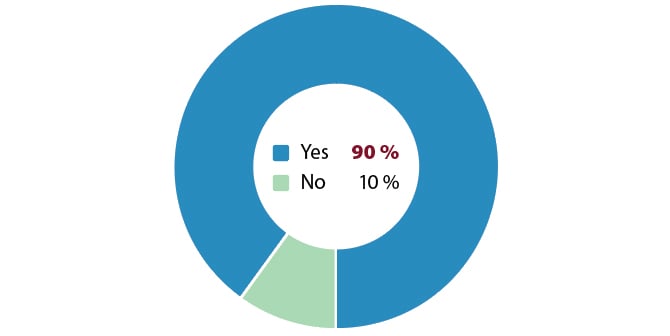
What aeronautical information do you access on your flight-planning/EFB app?
Maps and charts and airport and FBO information were the top result for this question, followed by flight and equipment manuals, regulatory documents, and with a fairly small response, checklists.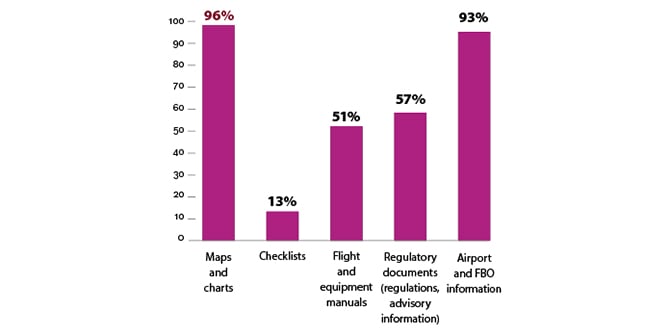
Which app is your primary tool for flight-planning and filing?
The most popular apps in this response were Collins Aerospace’s ArincDirect, FltPlan.com, ForeFlight Mobile, Garmin Pilot (which also owns FltPlan.com), and cited most in the Other category, Universal Weather and Aviation’s UvGO. Also listed in the Other category were Honeywell’s GoDirect Flight Bag Pro, SkyDemon, and OzRunways EFB.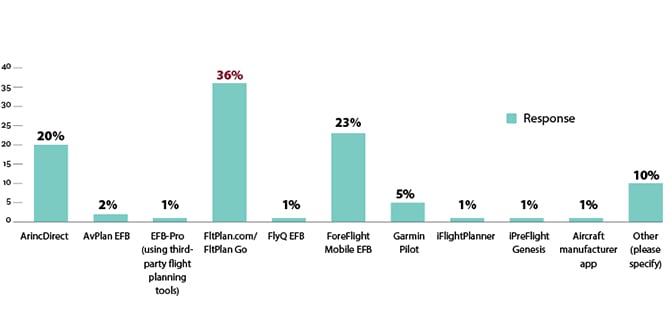
Do you use an EFB app’s moving-map with own-ship position while flying?
Despite regulators trying to discourage pilots from using own-ship position displays on moving-maps in EFB apps, a majority of respondents say they are doing so. Only three respondents reported that their regulator or company doesn’t allow use of this kind of app feature. Evidently, pilots benefit from own-ship position displays on their EFB apps, and they aren’t shy about acknowledging this.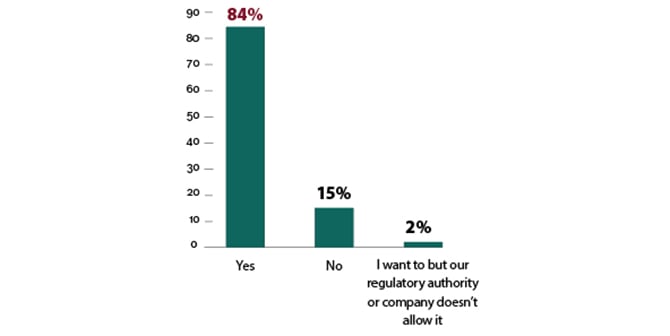
Do you carry backup printed maps/charts while flying?
While there is no specific FAA requirement that pilots carry printed charts, 25 percent of respondents say they do so for backup purposes.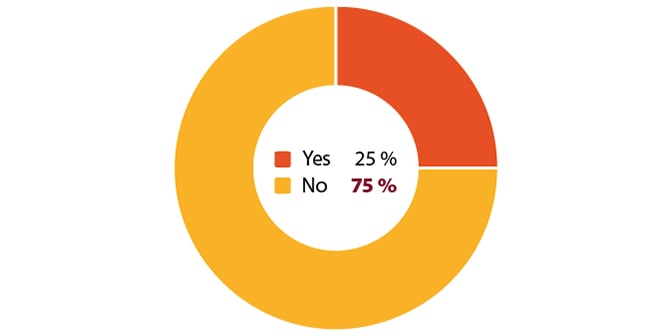
Do you fly with a portable ADS-B receiver?
Only 30 percent responded yes in this question, which may in part be due to the difficulty of receiving a strong signal from ADS-B ground stations in a business jet flight deck. But that response is also understandable, given the results of the following three questions.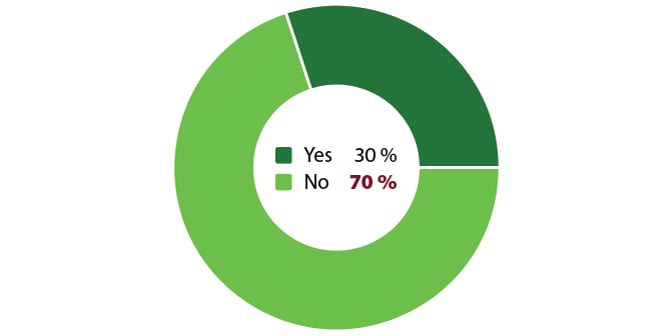
Is your aircraft equipped with ADS-B In (permanently installed in avionics)?
Here, 75 percent of respondents confirmed that they fly with ADS-B In equipment installed as part of their avionics, which generally provides better reception of ground stations compared to portable receivers.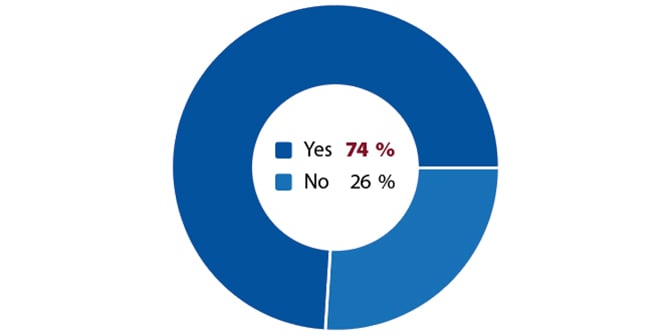
Do you obtain inflight weather information via satellite data link?
A strong 65 percent of respondents use satellite datalink to gather weather information, suggesting that this is becoming a more popular method of obtaining inflight weather information.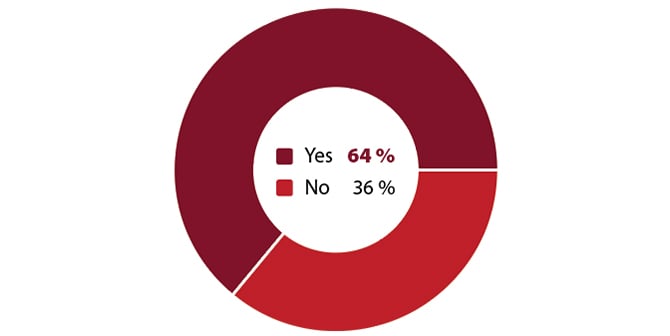
Do you fly with SiriusXM Weather equipment and subscription?
A surprising number of respondents use SiriusXM to provide satellite-based weather information to the flight deck.
If your EFB app includes performance calculations, do you use these features to calculate performance?
Many EFB apps allow fairly sophisticated performance calculation for a variety of aircraft types, and respondents indicate that they find this useful. The most-used feature is for weight-and-balance calculations, followed by takeoff performance, both with and without runway analysis. Landing calculations also ranked fairly high.
I wish my EFB would…
We asked respondents to list some of their wished-for features in their favorite EFBs. Some of the highlights:
- Many respondents want runway analysis available as part of performance calculations. Not all apps offer this, but it is a feature built in to APG’s iPreFlight Genesis. FltPlan.com also offers access to runway analysis as does ArincDirect.
- “Provide tech stops with our SOPs and calculate the cost using current fuel costs.”
- A frequent request was for international plotting charting capability. Apps that offer this capability are available—Scott Plot, PlogNG, and ArincDirect are some—but typically not integrated into the popular EFB apps.
- Geo-referenced SIDs and STARS is another popular request, but in fact some of these are available when using Jeppesen charts in the apps where those are available. Not all Jeppesen SIDs and STARs are geo-referenced, however.
- “Reasonably-priced scheduling and calendar functions for small flight departments.”
- Many respondents asked for integration between apps so they can share data and reduce the number of apps needed. “Share data seamlessly between different aviation apps.” And, “Integrated with other apps and data sources—ForeFlight w/APG, Flightbridge, scheduling software—more one stop shop.” Also, “We use multiple apps to obtain all the information. It would be extremely useful to have them all combined into one app that took you through each step in logical order and produced weather, flight plan, weight/balance, and performance and gave you the ability to easily save for reference. A fuel buy-vs-tanker program integrated into flight planning would also be helpful.”
- A couple of respondents wished for better app integration with avionics, which is something that Garmin avionics and the Pilot app offers. One wrote: “I hope that Honeywell can integrate the iPad EFB with the installed certified avionics so data can be pushed to and from the EFB. That would allow the flight crew to ensure the data displayed on the EFB matches the installed avionics.” And another wrote: “The ability to integrate EFB information into installed avionics would be an amazing increase to overall safety. Being able to talk to/from aircraft avionics—the information available on my EFB is substantially greater than in some of the aircraft we operate.”
- “Interface more effectively with our scheduling software.”
- “Decipher the archaic Notam symbology.”